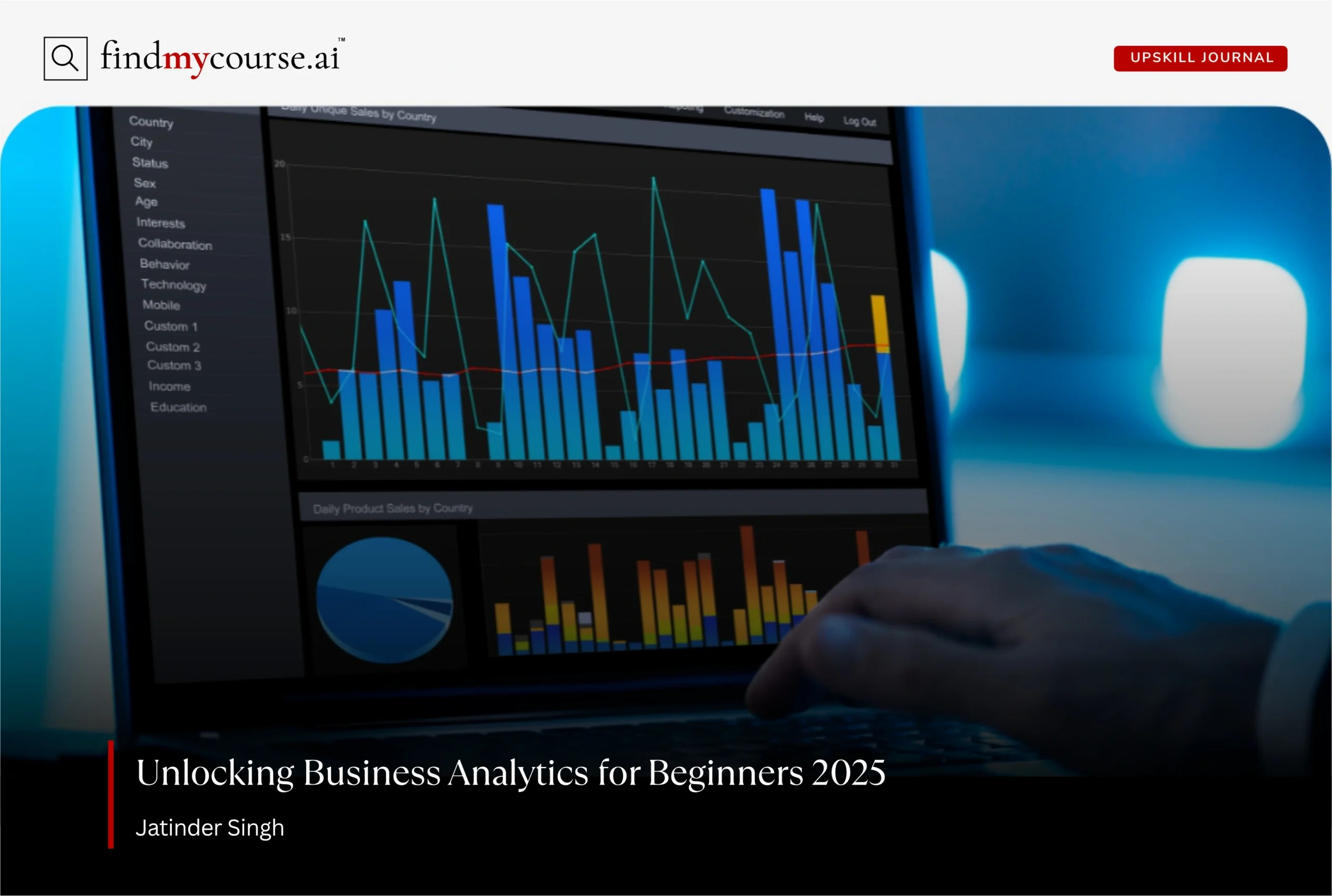In a world overflowing with information, one question is on many minds: What is business analytics? As technology evolves and data becomes the new currency, businesses everywhere need to turn numbers into meaningful actions. If you’re curious about this dynamic field or considering it as a career, you’re in the right place. In this guide, we’ll explore what business analytics is, why it’s so important in 2025, the skills you’ll need, and the many ways you can get started—even if you choose to study online.
What exactly is Business Analytics?
So, what is business analytics, and how does it work? At its core, it means examining data and turning it into actionable insights. It usually involves several steps:
- Collecting Data: This could be sales figures, website visits, or customer feedback.
- Analyzing Trends: Looking for patterns or changes in the data.
- Predicting Outcomes: Using the past to make smart guesses about the future.
- Recommending Actions: Offering advice based on what the numbers say.
For example, a retail store might use this tool to see which products are selling fastest. Or a hospital might analyze patient records to improve care and reduce wait times. In every case, the goal is to move from guessing to knowing.
Why is Business Analytics Important in 2025?
In today’s competitive marketplace, almost every organization uses business analytics in some form. From e-commerce giants and hospitals to banks and sports teams, the ability to make sense of data is a true superpower. Here’s why:
- Faster, Smarter Decisions: With analytics, leaders no longer need to guess—they can act with confidence, using real numbers as their guide.
- Predicting the Future: Companies can anticipate trends, understand what customers want, and prepare for what’s coming next.
- Solving Problems: Whether it’s reducing waste, preventing fraud, or improving customer service, analytics offers clear solutions based on facts.
Key Types of Business Analytics
Business analytics isn’t just one thing—it includes several types that work together to support better decision-making. Let’s break them down:
Descriptive Analytics: What Happened?
This first step looks at past data to answer basic questions like, “How many products did we sell last month?” or “What was last year’s profit?” Descriptive analytics summarizes and visualizes data to give a clear picture of history.
Diagnostic Analytics: Why Did It Happen?
Once you know what happened, you’ll want to know why. Diagnostic analytics digs deeper to uncover causes—maybe sales dropped because of seasonality, or a website issue led to fewer visitors.
Predictive Analytics: What Will Happen?
Using trends and patterns, predictive analytics forecasts what’s likely to come next. Retailers use it to prepare for busy shopping seasons, and banks use it to spot signs of fraud before it happens.
Prescriptive Analytics: What Should We Do?
Finally, prescriptive analytics recommends actions. Should a company launch a new product? Where marketing dollars should be spent? This advanced approach helps businesses plan their next move with precision.
How Does Business Analytics Work in Real Life?
So, what is business analytics like day-to-day? Imagine you’re on a marketing team. You gather data about customer preferences, past sales, and online behavior. Using analytics tools, you identify the products people love most and see which promotions work best. Armed with these insights, you design a campaign that targets the right audience—boosting sales and customer satisfaction.
The same principles apply across industries. Hospitals use analytics to improve patient care, logistics firms optimize delivery routes, and sports teams build strategies for victory.
Must-Have Skills for a Business Analyst
You might be asking: What does it take to become a business analyst in 2025? The good news is you don’t need to be a math genius or a coder to get started. Here’s what helps:
- Curiosity: A willingness to ask questions and dig deeper.
- Analytical Thinking: Comfort working with numbers and solving puzzles.
- Communication: The ability to turn complex findings into simple stories for everyone to understand.
- Familiarity with Tools: Many analysts use Excel, SQL, Tableau, or Python, but you can begin with basic tools and build from there.
- Business Understanding: Knowing how companies work and what their goals are.
There are many ways to learn these skills. You can enroll in a university program, join a bootcamp, or study online through flexible courses that fit your schedule.
What Can You Do With Business Analytics?
Business analytics opens doors to many rewarding career paths. Here are some of the most popular roles and what they do:
| Role | Main Focus | Typical Responsibilities |
| Business Analyst | Connecting data and decision-makers | Collaborate across departments; turn insights into action |
| Data Analyst | Exploring and interpreting raw data | Find patterns and trends; prepare data for reports |
| Operations Analyst | Boosting efficiency and streamlining processes | Analyze workflow; suggest ways to save time and resources |
| Marketing Analyst | Understanding customer behavior and campaign results | Analyze marketing data; guide promotional strategies |
| Business Intelligence Analyst | Creating dashboards and ongoing insight | Build reports and visualizations for better business choices |
Industries hiring business analysts include finance, healthcare, technology, retail, sports, and more. In 2025, competitive salaries and strong career growth are common—especially if you keep learning and expanding your knowledge.
How to Start a Career as Business Analyst
- Build a foundation: Start by learning the basics of statistics, business concepts, and technology.
- Consider a degree: Many begin with a bachelor’s degree in business, data science, or a related field.
- Pursue certifications: Explore certificate programs or a master’s to boost your credentials.
- Study online: Take advantage of flexible online courses that fit around your schedule—ideal if you’re working or have other commitments.
- Get hands-on experience: Work on real-world projects, such as analyzing your own social media data or offering to help a local business.
- Showcase your skills: Build a portfolio of your work to demonstrate your abilities to future employers.
These steps can help you enter the field with confidence and stand out as a skilled, job-ready business analytics professional.
The Future of Business Analytics
The world of business analytics continues to expand as technology advances. Artificial intelligence, machine learning, and big data tools are becoming standard in many workplaces. However, the human touch remains crucial—data needs people to ask the right questions, interpret results, and communicate clearly.
With demand for business analysts higher than ever, and the flexibility to work in-person or remotely, there has never been a better time to enter this field.
Final Thoughts
To wrap up, business analytics is much more than numbers—it’s the art and science of turning information into better choices and real-world results. Whether you’re looking to boost your career, help your organization grow, or simply understand how today’s data-driven world works, this is your key to making a real impact.
Stay curious, keep learning, and remember—the world of business analysts is full of potential. If you ever need advice about what is business analytics and where you fit in, our AI assistant is always here to help.


